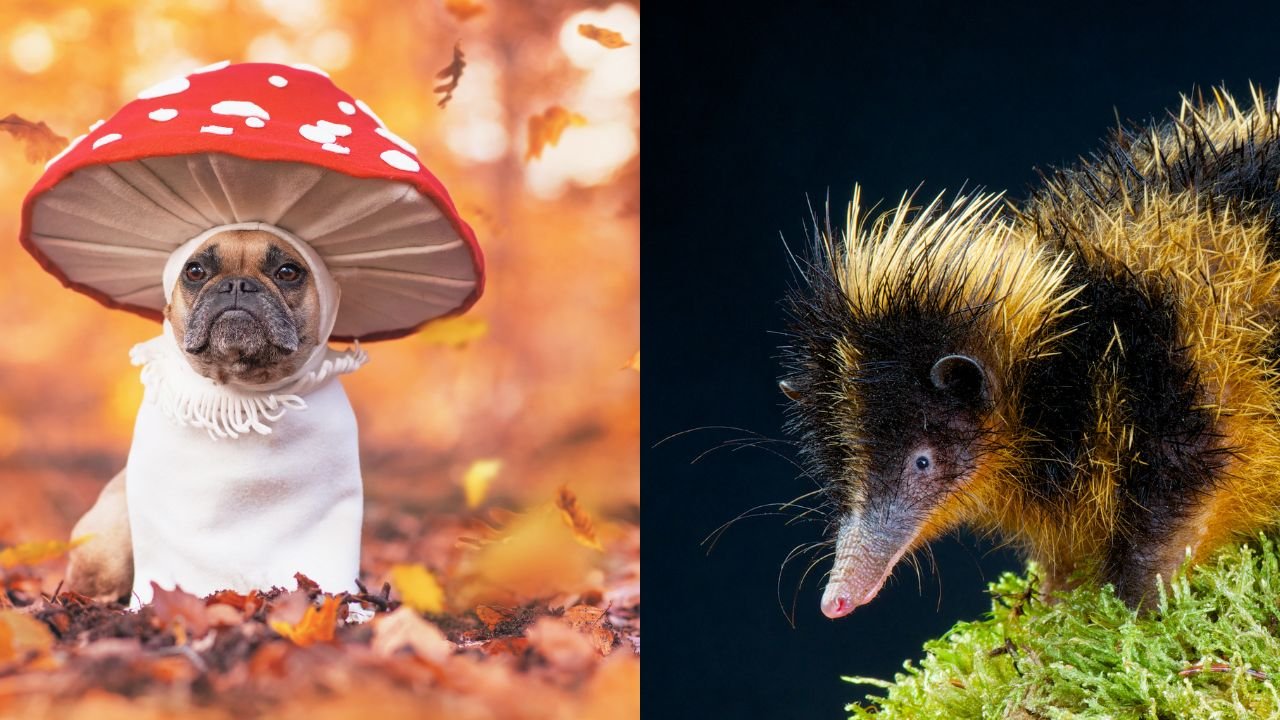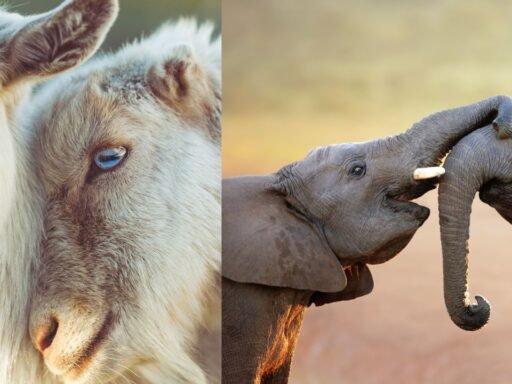In the huge realm of plants and fauna, high-quality species live hidden from the general public’s focus, overshadowed with the useful resource of manner in their extra famous counterparts like lions, pandas, and elephants. However, there are various wonderful creatures on our planet which is probably as captivating as they may be hard to recognize.
5 Unique Animals You Didn’t Know Existed
These lesser-mentioned animals very own specific inclinations that purpose them to stand out within the animal state, even though they aren’t drastically diagnosed. Here, we’re capable of discover 5 p5 Unique Animals You Didn’t Know Existedncovering information about their biology, habitats, and the demanding conditions they face inside the wild.
1. The Pink Fairy Armadillo (Chlamyphorus truncates)
The Pink Fairy Armadillo is the smallest species of armadillo, with an average period of approximately five-6 inches. This small, burrowing mammal is nearby to primary Argentina, wherein it lives in arid grasslands, sandy plains, and scrubby environments. Its call is derived from the faded purple colour of its shell, this is an first-rate version that permits it camouflage in its wasteland habitat.
Unique Characteristics:
The Pink Fairy Armadillo is a nocturnal creature, spending maximum of its time burrowing underground to avoid predators and the intense daytime warmth.
Its bendy, almost leathery shell allows for better burrowing overall performance, as it is able to with out issue maneuver via loose soil.
Unlike extraordinary armadillos, the Pink Fairy Armadillo has a completely unique flattened body with a guard-like form at its rear, which it uses to % earth at the back of it even as digging.
Behavior and Diet:
Pink Fairy Armadillos normally feed on ants and precise small bugs. Their sharp claws help them dig into ant hills and termite mounds to extract their prey. They can also consume small plant substances like roots and tubers to complement their diet.
This elusive animal is rarely seen thru the usage of people, and its secretive manner of existence makes it a hard species to look at. Sadly, habitat destruction and domestic puppies pose giant threats to the Pink Fairy Armadillo population.
2. Aye-Aye (Daubentonia madagascariensis)
Found absolutely in Madagascar, the Aye-Aye is one of the most bizarre-searching primates in the international. This nocturnal animal belongs to the lemur family however bears little resemblance to its cousins. The Aye-Aye has big, bat-like ears, sharp rodent-like tooth, and a very specific skeletal middle finger that makes it in reality stand out.
Unique Characteristics:
The Aye-Aye makes use of echolocation (similar to bats) to stumble upon hollow areas inside tree trunks, in which its prey, normally bugs and grubs, are hiding.
Its extended, thin center finger is its maximum precise feature. The finger is used to tap on bushes to discover cavities, and then it gnaws via the bark and inserts its finger to fish out grubs.
The Aye-Aye’s continuously developing incisors are remarkably just like those of rodents, allowing it to bite through hard wood to get right of access to its meals.
Myths and Cultural Beliefs:
In Madagascar, the Aye-Aye is surrounded through superstition. Locals receive as true with it’s far a harbinger of loss of life, and its look is said to supply awful splendid fortune. This false impression has regrettably brought about the killing of Aye-Ayes via a few villagers. Conservation efforts are in area to guard the ones misunderstood primates from damage.
Habitat and Conservation:
Living inside the dense rainforests of Madagascar, the Aye-Aye faces the regular hazard of habitat destruction due to deforestation. As a stop quit result, the IUCN classifies it as “Endangered.” Conservation applications interest on defensive the Aye-Aye’s habitat and coaching community groups approximately its ecological significance.
3. Saiga Antelope (Saiga tatarica)
The Saiga Antelope is one of the maximum amazing-looking mammals because of its oversized, trunk-like nose that devices it aside from fantastic antelope species. Native to the semi-arid steppes of Central Asia, which incorporates Kazakhstan, Mongolia, and southern Russia, the Saiga Antelope has tailor-made to thrive in one of the most harsh environments on Earth.
Unique Characteristics:
The Saiga’s big, flexible nose serves a beneficial reason: it helps to clear out dirt and adjust the temperature of the air they breathe, an crucial model for the dry, hot summers and frigid winters of the steppes.
The Saiga is known for its exceptional staying power, capable of migrating tremendous distances throughout Central Asia looking for meals and water.
Life Cycle and Reproduction:
Saiga Antelopes are migratory animals, travelling in herds that may range in the masses. During the mating season, guys compete for dominance and the right to mate with a set of girls. Unfortunately, the intense competition among men, coupled with environmental stressors, has added about a excessive mortality rate for the men at some point of the rut.
Conservation Status:
The Saiga Antelope is significantly endangered, with population numbers plummeting because of poaching for his or her horns, which is probably applied in conventional Chinese medicinal drug. Additionally, illness outbreaks have worn out big quantities of the populace in present day-day years, making conservation efforts pressing. Global projects reason to guard their habitat and curtail illegal searching practices.
4. The Shoebill Stork (Balaeniceps rex)
Native to the swamps of Central and East Africa, the Shoebill Stork is a putting chook recognized for its massive invoice that resembles a timber shoe. Standing as a wonderful deal as five toes tall with an excellent wingspan of over 8 toes, the Shoebill is an amazing predator in its wetland surroundings.
Unique Characteristics:
The Shoebill’s large bill is its defining function. It isn’t just for display; the bill is strong sufficient to overwhelm prey, which incorporates large fish, frogs, and sometimes even more younger crocodiles.
Unlike maximum birds, the Shoebill remains immobile for extended intervals, patiently prepared to strike its prey with lightning-rapid precision. This behavior has earned it the nickname “statue chook.”
Its feathers are a dusty grey-blue, giving it an historic, nearly dinosaur-like appearance.
Behavior and Habitat:
Shoebills prefer to live in remoted wetlands and marshes wherein they could hunt with out disturbance. They are solitary creatures, often dwelling on my own or in small circle of relatives gadgets. Despite their fearsome look, Shoebills are quite calm birds and had been determined bowing to every wonderful in a few unspecified time inside the future of interactions—a signal of non-aggressive communication.
Conservation Efforts:
While not yet critically endangered, the Shoebill population is below hazard from habitat loss due to wetland drainage and human encroachment. Conservationists are going for walks to keep their habitats and mitigate human-herbal international conflicts to make certain the species’ survival.
Five. The Goblin Shark (Mitsukurina owstoni)
The Goblin Shark is one in each of the sea’s most unusual and mysterious predators. Found within the deep waters off the coast of Japan and different elements of the Pacific Ocean, this shark’s horrifying appearance units it aside from each distinctive shark species. With its elongated snout, retractable jaws, and faded, almost translucent skin, the Goblin Shark is a actual deep-sea oddity.
Unique Characteristics:
The Goblin Shark’s most exquisite feature is its extended, flattened snout, which is included in specialised sensors that find the electrical fields generated through particular marine creatures.
When the Goblin Shark senses prey, its jaws growth from its mouth to seize the unsuspecting victim. This jaw-extension mechanism is unique and incredibly effective in the deep ocean, wherein meals is scarce.
Due to its deep-sea habitat, the Goblin Shark has a gradual metabolism and movements at a lethargic pace in comparison to one-of-a-type sharks.
Habitat and Behavior:
The Goblin Shark is hardly ever visible thru way of human beings, because it lives at depths of round a hundred meters (330 feet) or greater. It prefers the darkish, bloodless waters of the deep sea, in which it hunts fish, squid, and crustaceans. Little is notion approximately its behavior because of the hassle of reading creatures that live so far under the floor.
Conservation Status:
While there’s no instant problem over the Goblin Shark’s population, it is however taken into consideration a unprecedented species. Because it lives in deep, far flung areas, it has largely avoided the threats of overfishing and habitat destruction that many one-of-a-type marine species face. However, scientists stay vigilant about the ability impacts of deep-sea fishing and ocean pollution.
Conclusion
These 5 particular animals you didn’t understand existed highlight the super variety of lifestyles on Earth. From the small and secretive Pink Fairy Armadillo to the deep-sea predator Goblin Shark, every of these species has tailored in exceptional techniques to continue to exist in its surroundings. Unfortunately, a number of these particular animals face extreme threats, from habitat destruction to poaching. By elevating hobby approximately their existence and significance, we are able to make a contribution to the conservation efforts that purpose to defend them for future generations. The international is entire of great creatures geared up to be placed, and those 5 animals remind us of the limitless wonders nature has to offer.







